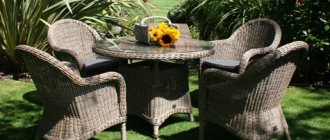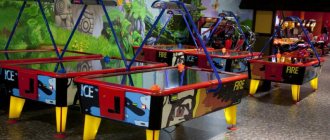Drywall production is a profitable business. This material is in great demand as it is used in construction. It consists of sheets of cardboard with reinforcing additives, which are glued together with a gypsum mixture.
Register for a free marathon
How to create passive income in 4 days
A marathon where you will create passive income live from scratch and learn specific strategies for investing in apartments, houses, garages, cars and even profitable sites
Begin
Drywall has the following qualities:
- easy
- retains moisture
- does not allow noise to pass through
- fire resistant
- lasting
- environmentally friendly
- plastic
Application
Drywall is used for construction purposes:
- construct partitions, arches, load-bearing walls, columns;
- repair walls;
- erect multi-level ceilings and install them;
- make decorations, shelving and cabinets;
- trim communication cavities.
Recruitment and selection of premises
Business plan for the production of foam blocks -. Production of corrugated sheets as a business.
Chain-link mesh production business - .
In order to open a workshop, a room of 300 square meters is enough. It is recommended to rent premises in a factory, preferably in an industrial area.
The area must be divided into three parts: the production line, a place for raw materials and a place for storing finished products. The latter is quite large, although it is light in weight.
In terms of personnel, to ensure continuous operation you will need a foreman, operators, an engineer and a supervisor in charge of production. It is recommended to hire universal workers so that they can replace each other if necessary.
When using coiled steel, there must be 2 employees behind the machine to monitor the work process. Their responsibilities will be: setting up the control module, refilling rolls and generally monitoring the equipment. The average salary is from 30 thousand rubles each.
What equipment to choose for the production of drywall
The entire material production process takes place using automated installations. Equipment for the production of plasterboard:
- mixer;
- conveyor;
- unwinder;
- former for gypsum sheets, gypsum and cardboard sheets;
- conveyors of various types (belt, roller conveyor, console, drying);
- rack.
Before products are sold, the conveyors on which they were manufactured are tested. To do this, select three sheets (longitudinal and transverse) and perform an examination. Russia has its own standards regarding drywall. If the sheets comply with them, then they can be produced on this equipment and subsequently sold.
A line for the production of drywall will cost no less than 1.5 - 2 million rubles.
What is the essence of profiles?
A profile is a frame that secures drywall. They come in different sizes, types, designs. An enterprise producing products of this kind must know the needs of customers and offer all types of products.
This should be taken care of even before you buy the equipment. After all, not every machine makes different types of profiles. Often, each device is capable of producing only one type of material. The price of a multifunctional machine is high.
Profiles come in the following types:
- beacons;
- guides;
- rack-mounted;
- ceiling;
- corner.
Most often, people buy guides (27 mm by 28 mm) and profiles for ceilings (60 mm by 27 mm). This is due to their convenient design, used in the construction of suspended ceilings and walls between rooms. Galvanized steel is used for the manufacture of profiles. Raw materials are purchased in the form of rolls (strips). The steel must be higher than the second category in quality.
The thickness of each layer is 0.3-0.6 mm. The guide profile is manufactured in accordance with the dimensions - 81 mm in width. The size (width) of the ceiling frame is 123 mm. For one ton you will have to pay about 35 thousand rubles. With this amount of material, 650 profiles of three meters each can be made.
Purchase of raw materials
To make drywall, you need to purchase quite a lot of components that make it up.
| Gypsum | The manufacturer has the right to choose the type of gypsum from which to make his products. He may use natural or artificial gypsum, or one obtained from chemical waste |
| Cardboard | This material is placed on both sides of the drywall blank. |
| Fiberglass | It gives the finished product fire resistance |
| Silicone granules | This is a filler that makes drywall moisture resistant. |
| Soap made from chemical materials | It helps to foam the necessary parts during the production process |
| Lignosulfonates | These are chemicals that are added to drywall construction to lower water levels. |
| Modified starch, foaming agent, water, table salt, caustic soda, casein, cellulose | Using these components, slurry is made (a mixture for pouring drywall) |
Sales of goods
The profiles are in demand among buyers, so implementation is carried out without any particular difficulties. An entrepreneur should pay attention to construction companies and contractors. They always need this product. Individuals involved in construction are interested in purchasing a high-quality and affordable product.
The best option is wholesale sales. It will be much easier for a businessman to carry out his activities if he has regular customers who purchase large quantities of goods at a time. Private individuals are also good. For them, you can display finished products in a separate room so that they can choose and buy them on the spot.
This segment does not require special marketing strategies if the company sells goods in bulk. When a factory has its own company store, advertising is necessary in any case. This is especially true during the winter season. During this period, sales decrease significantly, as building materials are not in demand in cold weather. The enterprise's production is unlikely to become unprofitable, but sales volumes will definitely decrease.
Drywall production technology
The business organization plan must contain a clause regarding the stages of product manufacturing. The technology for producing plasterboard is not complicated. She walks in a few steps.
| Production of gypsum sheets | This is the initial stage in the production of plasterboard, which is carried out using a conveyor that forms the desired shapes of gypsum strips. If you add impurities to the gypsum mixture (depending on the purpose of the material), you can get a more durable finished product |
| Sheet cutting | For this stage, a conveyor (roller table) is used, which cuts sheets of plasterboard |
| Giveaway | This process is carried out using cantilever conveyors. They send finished products to dryers |
| Drying | It takes at least an hour |
| Trimming | The roller conveyor is involved in giving the desired shape to plasterboard sheets |
| Stacking | These steps are carried out with the help of employees who pack the finished products |
| Package |
Business component
In order for a business to operate legally, management must obtain an identification number from the tax office and register the business. Registration methods depend on the chosen form of management: individual entrepreneur or LLC.
If management has plans to interact with well-known suppliers and customers in their circle, then it is better for the company to be a legal entity. Some organizations execute transactions only with representatives of organizations, and not with individuals. This way they are more confident in the counterparty.
If the owner does not have tax knowledge, then he should consult with a lawyer or accountant to choose the appropriate method by which the organization will pay its tax obligations. At the initial stage, they usually stop at the simplified one, since it is much simpler. Once the business grows, management can change the way they pay taxes.
What documents are needed to open
The best option for the production of drywall is to register a legal entity in the form of a limited liability company. Individual entrepreneurs also have the right to engage in this area of activity, but compared to LLCs, their activities are greatly curtailed. To register as a limited liability company, you must collect and submit to the registration authority:
- application for registration of LLC and decision of the meeting of shareholders on the creation of a limited liability company;
- The company's charter and legal address (the address of the location of the production area is quite often used);
- information about the director of the LLC and the chief accountant - photocopies of passports.
In addition to the above, you will need to register with the relevant government agencies and open a bank account.
Profit
When calculating monthly revenue, we will assume that the line is loaded at 55%, while 1 ton of thin-sheet steel is processed daily.
- Possible productivity, linear meters per hour – 600;
- Actual productivity, linear meters per hour – 329;
- Shift, hours – 8;
- Work shifts per month -22;
- Output of finished products per month, linear meters – 57,904;
- Price of 1 linear meter of PP 60*27, rub. - 20;
- Revenue, thousand rubles – 1,158;
- Profit, thousand rubles – 90.
The investment will pay off in 23-24 months.
© Elena Staretskaya, BBF.RU
Sales of finished products
The business plan must take into account possible options for selling the finished profile. Despite the fact that the demand for these products is high, the sales plan must be thought through in detail. There are three main channels through which finished products are sold:
- contractors and construction companies;
- contractors and renovation companies;
- private individuals.
And if you can work with the first two channels directly, then retail sales can be organized through construction markets, stores, and hypermarkets. Hypermarkets are the best at helping you implement your sales plan, because they have a consistently high turnover.
GCR market overview
Due to the stagnation in the Russian economy, the size of the plasterboard market is shrinking. According to recent studies, there has been a decline over the past 3 years. Consumption of gypsum boards (plasterboard sheets) has returned to the level of 10 years ago.
In 2020, consumption decreased by 6% compared to the previous year, amounting to 220 million square meters. m, plasterboard production volume – by 4%. At the same time, the dynamics are such that, against the backdrop of a decrease in consumption in the Russian Federation, exports to other countries are increasing.
This situation is associated with a decrease in construction volumes in the country. Construction companies are the main consumers of the material.
However, there is unmet demand, especially in regions where there is no open production of plasterboard sheets. It is definitely advisable to start a business here.
Let's talk about the financial side of things
It has already been proven in practice that even a small enterprise producing profiles can bring its owner high income. But before moving on to specific profitability indicators, it is important to estimate the capital investments that will be required to start a business.
The production of profiles for plasterboard will require the following investments (taking into account new equipment):
- Registration of an enterprise – from 10,000 rubles.
- Purchase and commissioning of the line (without additional equipment) – from 600,000 rubles.
- Preparing the premises for operation - from 100,000 rubles.
- Providing a raw material base - from 200,000 rubles.
In the case of purchasing used equipment, capital costs will be reduced to 600,000 rubles.
If we talk about a low-capacity workshop (200 linear meters per hour), then with an 8-hour shift, 22 days a month, it is possible to produce up to 35,500 linear meters of products monthly. As for the cost of the finished material, much depends on its type. For approximate calculations, let’s take the average wholesale price of the profile – 30 rubles/linear meter. By selling the entire volume of manufactured products, you can have revenue in the amount of ≈1,000,000 rubles. Part of it will go to further organization of production, and about 100,000 rubles. the entrepreneur himself will earn.











